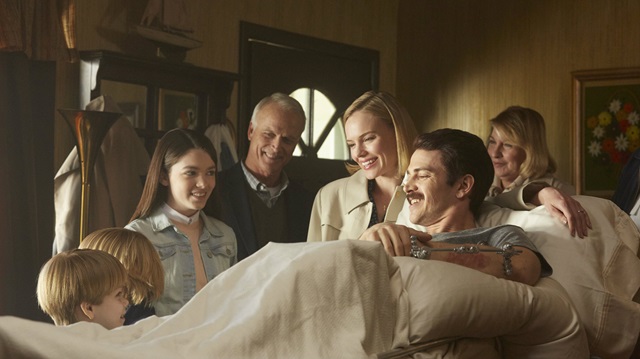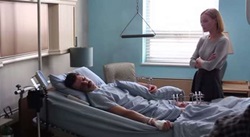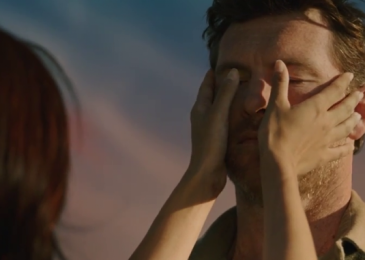
Samuel Goldwyn Films – Kate Bosworth and Hayden Christensen in ’90 Minutes in Heaven’
What Do We Make of ’90 Minutes in Heaven’?
Near-death experiences make for popular books and movies. But what should Christians do with them?
Scot McKnight/ September 11, 2015

Samuel Goldwyn Films – Hayden Christensen and Kate Bosworth in ’90 Minutes in Heaven’
Don Piper’s story, now made visible in the movie 90 Minutes in Heaven (out this weekend), records his experience of “dying” as a result of a head-on car crash and experiencing some moments (90 minutes of them) of glorious encounter with “heaven” where God, a suffusing and overwhelming light, resided in the middle of the heavenly city.
In that near death experience (NDE), Piper saw and heard the voice of many of his fellow Christians as they were journeying toward the gate of heaven—but he never entered. A fellow pastor was praying for his recovery at the crash scene, and he found himself singing along with the pastor, back on earth.
The slow-developing movie focuses far more on the pain both Piper (Hayden Christensen) experienced and his family, especially his wife (Kate Bosworth), endured as he lay in hospital beds for months—suffocating with a desire to return to heaven and unwilling to communicate either about his NDE or what was happening in his soul. The slowness of the scenes accentuates the slowness of his recovery. But recover he did, to find a purpose in life—to tell people that heaven is real and that prayer really works.
Piper’s story is encouraging, and surely in the top two or three of hundreds of NDE stories I have read.
I do not disbelieve Don Piper’s story. He seems credible, and his experience is far from unusual. Mally Cox-Chapman, a skilled journalist, read and interviewed and tracked down one story after another. In her book The Case for Heaven: Near-Death Experiences as Evidence of the Afterlife, we read the fairly common pattern of near-death experiences:
- Feelings of peace and quiet
- Feeling oneself out of the body
- Going through a dark tunnel
- Meeting others, including one or more beings of light
- A life review
- Coming to a border or limit
- Coming back
- Seeing life differently
- Having new views of death
Not everyone has each element. But the pattern is so common, and spans the religious spectrum so noticeably, that we can speak intelligently of the “NDE Pattern.” Christians of all stripes, Muslims, Buddhists, and others tell similar stories. In fact, there are NDE stories going all the way back to ancient Egypt and ancient Rome. Many of those stories have similar elements, though each religious orientation causes a reshaping of those elements.
Piper experienced the first two, not the second, the fourth, not the fifth, clearly the sixth and the seventh, and from that point the last two elements have reshaped his life and ministry. And the movie shows far fewer specifically Christian themes than his book did.
My concern is neither the movie nor Piper’s story; my concern is what to do with NDEs. What are we to make of them? Are they all true? Are they all bogus? How do we know?
And I have another concern: If death is irreversible, how can these be seen as experiences of what happens after death? Most would say these people have not, in (scientific) fact, died. Instead, they have entered into a pre-death experience that may glimpse heaven or the afterlife (or it may do neither).
But is not the deeper ache for an “after-death” experience? One where someone has scientifically died and told us what is in the Beyond? (We have such an account in the Gospels of the New Testament.)

Samuel Goldwyn Films – Kate Bosworth and Hayden Christensen in ’90 Minutes in Heaven’
The issue then is what to make of NDEs. After studying story after story of the NDE Pattern, Cox-Chapman landed on at least three conclusions, and these conclusions need to be considered before we rush to affirm too quickly the truthful witness of NDEs.
Support our work. Subscribe to CT and get one year free.





